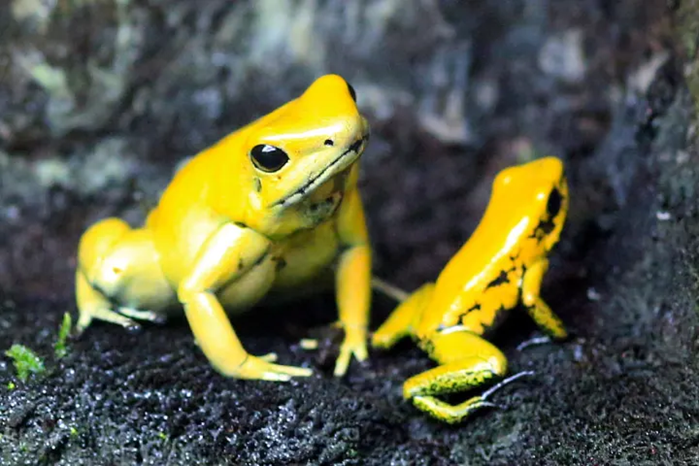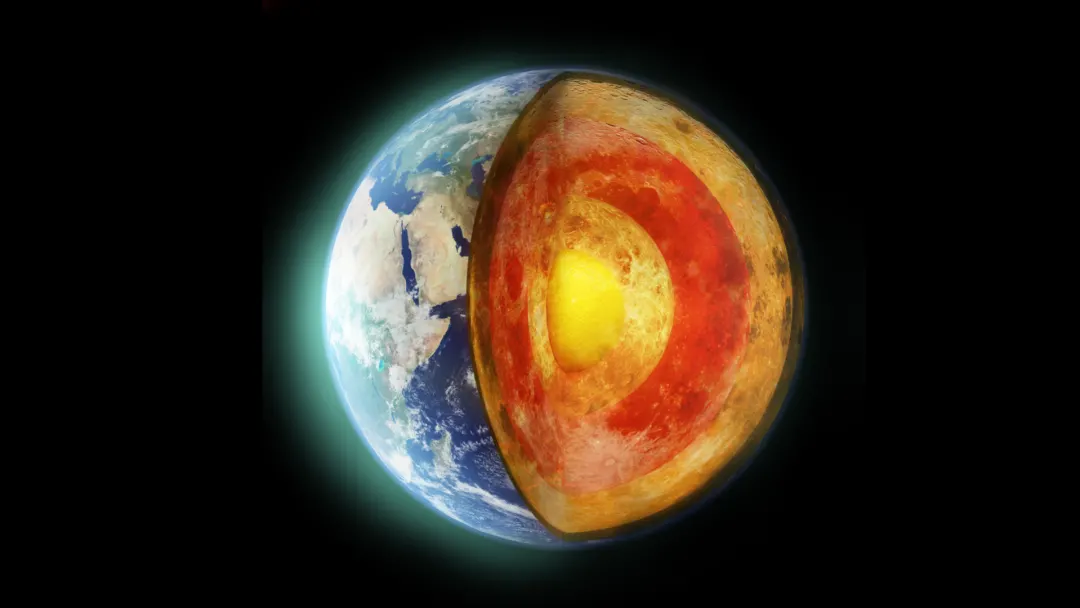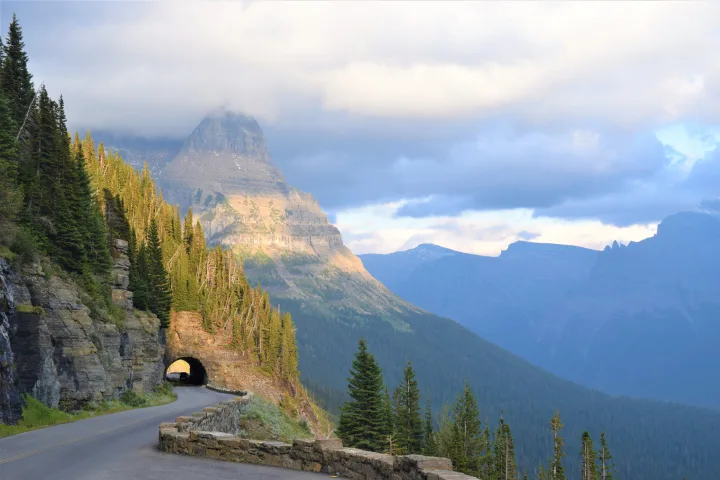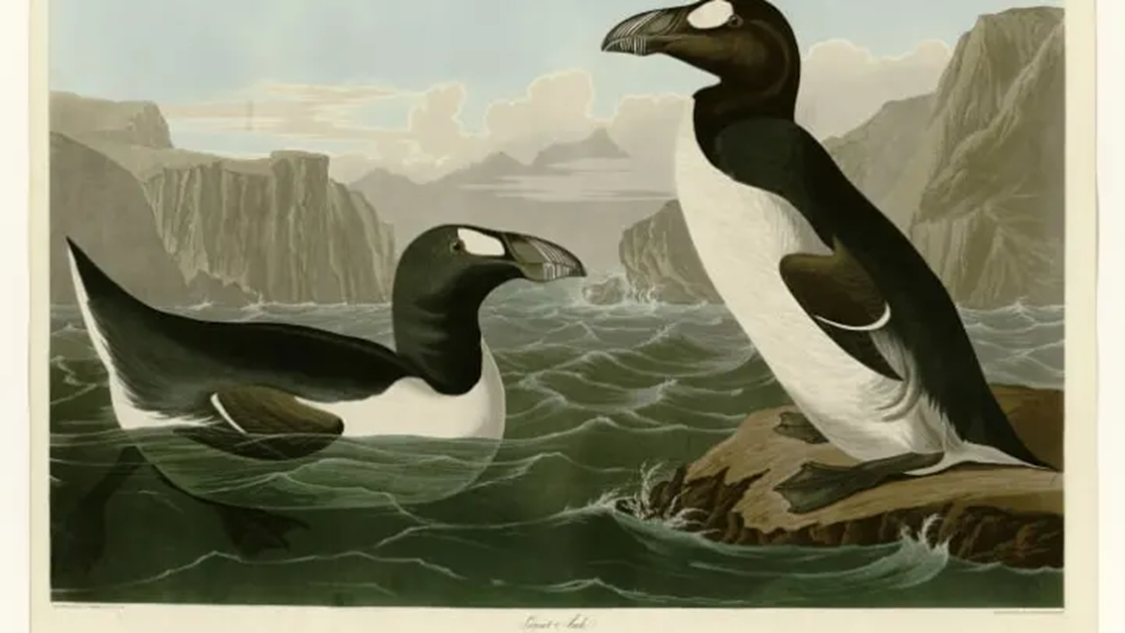© 2022 2141 26


СДЕЛАЙТЕ СВОИ УРОКИ ЕЩЁ ЭФФЕКТИВНЕЕ, А ЖИЗНЬ СВОБОДНЕЕ
Благодаря готовым учебным материалам для работы в классе и дистанционно
Скидки до 50 % на комплекты
только до
Готовые ключевые этапы урока всегда будут у вас под рукой
Организационный момент
Проверка знаний
Объяснение материала
Закрепление изученного
Итоги урока

СБОРНИК ТЕКСТОВ ДЛЯ АНАЛИТИЧЕСКОГО ЧТЕНИЯ С ЗАДАНИЯМИ для работы на уроках английского языка в 10-11 классах общеобразовательной школы
Данное методическое пособие содержит 6 текстов для аналитического чтения. После каждого теста предложены 2 задания на контроль детального понимания прочитанного. Тексты взяты с известного сайта www.mentalfloss.com, которые преобразованы в формат упражнений для развития навыков аналитического чтения. Сборник может быть использован на уроках английского языка в качестве дополнительного материала к основному курсу, а также на факультативных занятиях. Пособие содержит актуальную информацию. С помощью данного сборника учащиеся смогут пополнить словарный запас и пополнить свои знания в области биологии и географии. Рекомендуемое время выполнения каждого задания 20-25 минут.
Просмотр содержимого документа
«СБОРНИК ТЕКСТОВ ДЛЯ АНАЛИТИЧЕСКОГО ЧТЕНИЯ С ЗАДАНИЯМИ для работы на уроках английского языка в 10-11 классах общеобразовательной школы»
Муниципальное бюджетное общеобразовательное учреждение
средняя школа № 2
СБОРНИК ТЕКСТОВ ДЛЯ АНАЛИТИЧЕСКОГО ЧТЕНИЯ
С ЗАДАНИЯМИ
для работы на уроках английского языка в 10-11 классах
общеобразовательной школы
составитель: учитель английского языка
1 категории Звонкова Татьяна Юрьевна
Смоленск 2022
Пояснительная записка
Данное методическое пособие содержит 6 текстов для аналитического чтения. После каждого теста предложены 2 задания на контроль детального понимания прочитанного. Тексты взяты с известного сайта www.mentalfloss.com, которые преобразованы в формат упражнений для развития навыков аналитического чтения. Сборник может быть использован на уроках английского языка в качестве дополнительного материала к основному курсу, а также на факультативных занятиях. Пособие содержит актуальную информацию. С помощью данного сборника учащиеся смогут пополнить словарный запас и пополнить свои знания в области биологии и географии. Рекомендуемое время выполнения каждого задания 20-25 минут.
Fireflies
| No summer evening is complete without watching—and sometimes catching—fireflies. There are about 2000 different species of lightning bugs, and there's still a lot that scientists don't know about them. Here are a few things we do know. 1. Fireflies are not actually flies—they’re beetles. Up close, it's easier to see that fireflies are beetles. And like all other beetles, they have hardened forewings. Fireflies use their forewings—also called elytra—for balance while in flight. 2. Fireflies are bioluminescent. Fireflies putting on a show in Japan. According to Live Science, the light is produced when oxygen is mixed with a pigment called luciferin, an enzyme called luciferase, and a chemical called adenosine triphosphate that provides cells with energy. The final part of the formula is uric acid crystals, which are located in the cells that make the light and shine the light away from the firefly's body. (The light-emitting part of the firefly is called a photic organ, by the way.) 3. Male fireflies focus on finding a mate. At the nucleus of their night flights, the brightness of their glow, and their flashing patterns is one thing: reproduction. These guys are intent on mating. Typically, the females sit immobile and only flash back when they see a male with a particularly impressive display. 4. Each firefly species has its own flash pattern. As males fly through the air searching for a mate, each uses a “flash fingerprint” specific to its species. According to the American Museum of Natural History, some firefly species only flash once; others use “flash trains” of timed bursts of light; some fly in specific J-shaped patterns; and others shake their abdomens side-to-side, so it looks like they’re twinkling. Scientists can use these distinct patterns to determine how many species are in an area. 5. Some fireflies sync up. Synchronous fireflies flash in unison, putting on an incredible performance. Males do this to communicate with and attract females (but people often flock to the sight as well). There are a few amazing places to see these types of fireflies, but you should plan in advance. Viewing the fireflies at Great Smoky Mountains National Park is such a huge tourist attraction that visitors have to enter a lottery to win tickets to the spectacular light show. 6. Flashing fireflies are rare west of the Rocky Mountains. There are a few exceptions, but for the most part, flashing fireflies don't live west of the Rockies. Whereas flashing fireflies communicate with their flickers, non-flashing ones use pheromones to stay in touch with one another. 7. Fireflies can be poisonous. Not only do fireflies taste nasty, they can cause some actual harm. When predators attack, fireflies kick into a process called reflex bleeding. They shed drops of blood that contain bitter-tasting chemicals that are poisonous to vertebrates, including lizards and sometimes birds. Snacking on a firefly likely wouldn’t kill a person, but it still isn’t wise to eat one. 8. In much of Europe, female fireflies don’t actually fly. European female fireflies remain flightless into adulthood and take on the form of a worm that glows rather than flashes. 9. Female fireflies can be cannibalistic.
 10. Firefly larvae aren't a picnic,either. These glowing worms will follow the slime trails of snails and slugs, bite and inject them with a paralyzing neurotoxin, and chow down. 11. Firefly populations are declining. People will often fondly recall summer nights spent in a backyard filled with glowing beetles before lamenting the lack of lightning bugs around today. And sadly, their anecdotal observations have been proven correct: firefly populations are declining. A 2021 study found that 14 out of 128 Lampyridae species are now at risk of extinction. Factors that are affecting other insects, like light pollution and habitat loss, are largely to blame. https://www.mentalfloss.com/article/51971/10-fun-firefly-facts |
1. Read the statements below and mark them T (true), F (false), NS (not stated):
a) Fireflies have hardened forewings which help them the swim. ______
b) Fireflies begin to shine thank to a special chemical reaction in their organism. ______
c) Male and female fireflies date only at night. _______
d) Fireflies can show different types of flash pattern. ______
e) Synchronous fireflies can flash in unison if they want to frighten away their enemy. _____
f) Non-flashing fireflies use their voice to stay with each other together. ______
g) Firefly larvae is absolutely harmless. _______
h) Fireflies are at the verge of distinction. _______
2. Find the correct answer (A, B, C or D):
1) What is the function of forewings?
A) They help to keep warmth.
B) They help fireflies to balance in flight.
C) They are completely useless.
D) They serve to fight against enemies.
2) What do females do during the period of dating?
A) They sit silently, wait and sometimes show their light.
B) They fly with males at night.
C) They catch in the grass.
D) They attract males with their smell.
3) What should visitors do to see a show at Great Smoky Mountains National Park?
A) They have to come without camera.
B) They have to come without children.
C) They have to enter a lottery to win tickets.
D) They have to pay a huge entrance fee.
4) Reflex bleeding is
A) the reaction to the heat.
B) the mechanism which frightens enemies away.
C) the reaction to the cold.
D) an illness.
5) Why larvae of fireflies are dangerous?
A) They have a very unpleasant smell.
B) They hunt for insects.
C) They have a special poison.
D) They eat leaves abundantly.
5 Small Creatures Capable of Causing Massive Amounts of Pain
| 1. Box Jellyfish Believed to be one of the most venomous organisms in the world, Box Jellyfish —encompassing about 16 species of box jellyfish—are smaller than a peanut. They thrive in warm waters around Australia’s Great Barrier Reef. The hard-to-see creatures are outfitted with four hair-like tentacles that trail behind its body and have the ability to fire their stingers into their victims. If you're hit, you will experience what is described as “the worst pain of your life—pain so intense that the maximum dose of morphine barely takes the edge off.” According to the documentary Killer Jellyfish, whether you live or die from an Irukandji sting depends on your current state of health as well as “your blood vessels' ability to handle the pressure.” There is no antidote for an Irukandji sting. Beyond managing symptoms with strong painkillers, you simply must wait it out. 2. Asian Giant Hornet The Pain: “It was like having red-hot thumbtacks being driven into my flesh,” Conrad Bérubé, a beekeeper in Nanaimo, British Columbia, told The New York Times. The murder hornet's range is expanding. In 2019, entomologists at Washington State University announced two sightings of the hornet near Blaine, Washington. Nests of the insects, which probably arrived in shipments of goods from Asia, were also found in British Columbia. Officials have urged citizens scientists to report any sightings. In Asia, in addition to Japan, the Asian giant hornet has also been spotted in Russia, Korea, China, Taiwan, Nepal, India, and Sri Lanka. 3. Toothpick Fish The Pain: Once the candirú travels up one's urethra, it spreads its spiked gills and lodges itself in the duct. Its presence can lead to inflammation, hemorrhage, severe pain, and, in the worst-case scenarios, amputation or death. The fish is rumored to be attracted to the smell of urine. Allegedly, it will even jump out of the river and into the urethra of a man peeing at the water’s edge. In reality, candirú track down their blood meals by sight and chemical cues and are incapable of physically swimming up a stream of urine. 4. Bullet Ant The bullet ant, found in the tropical rainforests of Central and South America, boasts the most painful insect bite in the world. Their venom contains a neurotoxic peptide that kills the caterpillars and other small creatures the bullet ant normally preys upon. But for humans, one sting will cause swelling and eye-watering pain for an entire day. Aggravating one of these creatures—which are also Earth's biggest ants—is something you’ll regret for a while. The Pain: If these ants feel threatened, they use their mouths to grab onto you before delivering the venomous stings. Entomologist Justin Schmidt, originator of the Schmidt Pain Scale for Stinging Insects, describes it as "pure, intense, brilliant pain. Like walking over a flaming charcoal with a 3-inch nail embedded in your heel." Sateré-Mawé people in Brazil's Amazon rainforest give bullet ants a special role in their traditional coming-of-age ritual. A boy around 12 years old must stick his hands into a pair of woven gloves filled with bullet ants. The boy must do this 20 times for 10 minutes at a time. This excruciating trial is meant to demonstrate that life without suffering is not worth living. 5. Golden Poison Dart Frog Phyllobates terribilis is the most poisonous amphibian on the planet. The tiny frog is designated endangered or critically endangered due to its limited range in a coastal region in southwest Colombia. One golden poison dart frog, which grows to a maximum of 2 inches long, may contain enough poison to kill 20,000 mice. The Indigenous Emberà tribes in Colombia have traditionally used the poison on the end of their blowgun darts. The Pain: The golden poison dart frog's skin is saturated with an alkaloid poison containing batrachotoxin, which prevents nerves from transmitting impulses. People or animals who come in contact with the frog may experience muscle contraction and convulsions, and even die. The poison is about 20 times more toxic than a typical poison dart frog. The golden poison dart frog likely gets its toxicity from its prey, specifically mites. The frog then secretes the mites' toxic compounds through its skin. Golden poison dart frogs held in captivity, which eat a mite-free diet, will not be nearly as toxic. https://www.mentalfloss.com/article/53520/5-small-creatures-capable-causing-massive-amounts-pain |
1. Read the statements below and mark them T (true), F (false), NS (not stated):

a) Box jellyfish use poisonous ink to cause pain their victims. _______
b) The hornet’s preferred victims are honeybees. _________
c) The hornets are endangered. _________
d) Toothpick sized fish attack its victims at night. ________
e) The bullet ant lives n the tropical rainforests of Central and South America. _______
f) The bullet ant is eatable. _______
g) The tiny dart frog is designated endangered due to its limited range in a coastal region in southwest Colombia. _______
h) Dart frogs can attack other reptiles and mammals. ________
2. Find the correct answer (A, B, C or D):
1) Why do people can experience “the worst pain in their life” if they are stung by a box jellyfish?
A) Because they may lose consciousness after being stung by a box jellyfish.
B) Because the wound will be bleeding after the stung.
C) Because only some drugs can help.
D) Because box jellyfish leave their tentacles in the wound.
2) Why it is difficult to escape from Asian giant hornet?
A) Because it can hide secretly on a human body.
B) Because it can fly very quickly.
C) Because the number of these insects is uncountable in the area.
D) Because they usually attack at night.
3) How does a candiru penetrate into a human body?
A) through a mouth
B) through an open wound
C) through the uretra.
D) through ears
4) How does the author compare the pain from a bullet ant’s venom?
A) like a pain after a cut of a knife
B) like a pain from a hot piece of charcoal
C) like a pain from fire
D) like a pain from a bee stung
5) The venom of a golden fish is used by local people in
A) hunting
B) medicine
C) in darts
D) in cooking




What’s the Thickest (And Thinnest) Layer of the Earth?
| If you undertook a journey to the center of the Earth in the manner of Jules Verne’s classic sci-fi novel, you wouldn’t come upon a herd of mastodons or a hidden sea where the plesiosaur swims free. What you would come upon would be temperatures so high and pressure so intense that you’d die long before you reached your goal: In fact, the deepest we’ve ever drilled into Earth is only about 7.6 miles. The lowest parts of the crust combine with the topmost layer of the upper mantle to form what’s known as the lithosphere, where tectonic plates are found. Under that is the mantle’s asthenosphere, then the lower mantle, and then another combination layer between the lower mantle and outer core that scientists call D” (pronounced “D double-prime”). Altogether, the mantle is Earth’s thickest layer, with an average radius of around 1800 miles—though, again, this varies by location. The rings aren't quite so distinct in real life. The mantle comprises mostly solid rock, and most of those rocks are silicon-oxygen compounds known as silicates. Olivine and garnet are a couple major players in that category. Non-silicate elements include iron, potassium, calcium, and more. It’s also extremely hot in the mantle, with temperatures ranging from around 1830°F to nearly 6700°F. .
Below the mantle is the roughly 1370-mile-thick outer core, consisting primarily of liquid nickel and iron. And, finally, the inner core: a sphere of solid iron (among other things) with a radius of nearly 760 miles. At over 9300°F, the inner core is definitely hot enough to melt that iron—but it doesn’t. Scientists think the pressure bearing down on the core from all the layers above it (and the atmosphere) may be keeping the iron in solid form. If you add up the mileage of both the inner and outer core, it’s technically more than that of the mantle. But since the two are typically considered separate layers, the mantle is most often cited as the Earth’s thickest slice. https://www.mentalfloss.com/posts/what-is-thickest-layer-of-earth |
1. Read the statements below and mark them T (true), F (false), NS (not stated):
a) It is impossible to reach the center of the earth in reality. ____
b) Crust is the thinnest layer of the Earth. ____
c) Topmost layer of the upper mantle is known as the lithosphere. _____
d) Lithosphere contains charcoal and petrol. ______
e) To explore the layers of the Earth scientists use special excavators. _____
f) The mantle comprises mostly solid rock, and most of those rocks are silicon-oxygen compounds known as silicates. _______
g) Outer core contains liquid gold and silver. _____
h) The mantle is considered as the thickest layer of the Earth. _____
2. Find the correct answer (A, B, C or D):
1) What can you can in the center of the Earth according to J. Verne?
A) glaciers and icebergs
B) islands and seas
C) animals which considered to be extinct
D) unknown human tribes
2) How many layers has the Earth got?
A) two
B) five
C) four
D) six
3) The lowest parts of the crust combined with the topmost layer of the upper mantle known as
A) the lithosphere
B) the hemisphere
C) the atmosphere
D) the stratosphere
4) What are silicates?
A) main substance of the core
B) a widespread building material
C) silicon-oxygen rocks in the mantle
D) precious metal
5) The iron in the core is solid because of
A) the temperature of the core
B) pressure of other layers and the atmosphere
C) the combination of elements of the core
D) the seize of the core
11 Facts about Glacier National Park
| Glacier National Park, established May 11, 1910, boasts over a million acres of America’s most awe-inspiring wilderness. More than 3 million people visited its snow-covered peaks in 2021, making Glacier the 27th-most-visited park in the national park system. So what exactly makes the place so alluring? It could be the turquoise lakes, the mountains, or maybe the unprecedented wildlife biodiversity. Here are a few reasons why people continue to visit this jewel in Montana. 1. Glacier National Park is part of the world's first international peace park.
Glacier National Park and Canada’s Waterton Lakes National Park were established as the first international peace park in 1932. After early management agreed that the upper Waterton Valley shouldn’t be divided between the U.S. and Canada, the two parks joined together as a symbol of goodwill, with both sides working with each other to preserve this wilderness. Every year since, Rotarians have performed an annual symbolic ritual where they shake hands at the border and "pledge not to take up arms against each other." 2. The local wildlife has hardly changed since the Lewis and Clark expedition. The wildlife is one of the reasons that Glacier earned a UNESCO World Heritage Site designation in 1995. Because of its acreage and early protection efforts, the park has maintained nearly all of its original animal species present before Europeans visited the area. The only mammals that no longer roam this part of Montana are woodland caribou and bison. 3. Glacier National Park is called the "crown of the continent." Given the diversity of flora and fauna across the park, it should come as no surprise that Glacier National Park is often called the “crown of the continent.” Naturalist and historian George Bird Grinnell, who led the efforts to establish Glacier National Park, coined this name in the early 20th century. 4. Mountain goats are an important part of Glacier National Park's identity. Mountain goats are among the park’s most famous residents. These hardy animals are so prevalent that they are Glacier’s official symbol. One of the best places to spot the agile animals is at the Goat Lick Overlook, a mineral lick located in the southern part of the park. 5. The park's early architecture displays European flair. After the area's designation as a national park in 1910, an increasing number of tourists made the trek to the mountains. To accommodate the crowds, the Great Northern Railway constructed a series of chalets and hotels that were designed to mimic lodges in Switzerland. These designs, combined with the use of natural materials, were dubbed “parkitecture.” Though WWII caused many of the lodgings to fall into disrepair, some of the buildings were saved and are registered as national historic landmarks. 6. One of the park's peaks supplies water to three oceans. Triple Divide Peak has the unique distinction of sending water to the Pacific, Atlantic, and Arctic oceans. The Continental Divide and Northern Divide, which direct water flow to the oceans, converge at the peak’s summit. This means that any water that falls on Triple Divide Peak will flow to the Pacific Ocean, Atlantic Ocean (by way of the Gulf of Mexico), or Arctic Ocean (by way of Hudson Bay, which is sometimes considered part of the Arctic Ocean). 7. Visitors can take boat tours in vintage watercraft. Wooden boat tours have been a feature of Glacier National Park since the 1920s, and many of the original boats still cruise today. Among the oldest is the Sinopah, a 45-foot vessel that carries visitors on Two Medicine Lake; and Little Chief, a 49-passenger boat found at Saint Mary Lake. 8. Historic "red jammer" buses transport guests to scenic sights and help reduce traffic. U.S. national parks introduced tour buses in the 1930s in an effort to reduce car traffic. While the buses were eventually phased out at other parks, Glacier continued to offer tours in the historic "red jammer" buses, so called because drivers could be heard jamming the gears going up and down the mountain passes. The refurbished fleet of 1930's buses continues to take guests to Glacier's notable sights and across the park on Going-to-the-Sun Road. 9. Glacier National Park's Going-to-the-Sun Road is a modern engineering marvel. Traveling east to west, Going-to-the-Sun Road is a 50-mile scenic drive through the park. The road, which was opened in 1933 with all the major structures finished in 1937, has received several distinctive honors, including being registered as a national historic place, national historic landmark, and historic civil engineering landmark. The road also appeared in the opening credits of 1980’s The Shining. 10. Glacier National Park is shaped by fire and ice. Although the park receives an average annual snowfall of around 138 inches, Glacier has a long history of wildfires. The park recorded 64 fires in 1936 and experienced a severe fire season in 2003, when 13 percent of the park’s land burned. 11. You can cross the international border in the northern part of the park. Located along Waterton Lake, Goat Haunt is considered the center of Waterton-Glacier International Peace Park. Visitors wishing to cross the border into either country need to present their ID before receiving a mountain goat-shaped stamp on their passports. https://www.mentalfloss.com/posts/eleven-facts-about-glacier-national-park |
1. Read the statements below and mark them T (true), F (false), NS (not stated):
a) Glacier National Park and Canada’s Waterton Lakes National Park are joined together as a symbol of goodwill. _____
b) Parks are in a good condition because of the activity of charity organizations. ______
c) Glacier National Park is called the “crown of the continent” because of the diversity of flora and fauna. _____
d) The most famous residents of the parks are cows. _____
e) The Great Northern Railway constructed a series of chalets and hotels that were designed to mimic lodges in Switzerland. _____
f) Tourist attractions in the parks are very expensive. ______
g) Visitors can take boat tours in vintage watercraft. ______
h) The authorities use the help of army to fight with fires in the parks. _____
2. Find the correct answer (A, B, C or D):
1) Why is Glacier National park called the jewel of Montana?
a) Because of the diversity of flora and fauna.
b) Because of its attractiveness for tourists.
c) Because of its soil rich in minerals.
d) Because of an extraordinary weather.
2) The Glacier earned a UNESCO World Heritage because of
a) the location of rare minerals on the territory of the park
b) the wildlife
c) a great number of factories and plants on its territory
d) numerous beaches and resorts on its territory.
3) Glacier’s official symbol is
a) an orchid
b) a cow
c) a mountain goat
d) a cat
4) U.S. national parks introduced tour buses in the 1930s in order to
a) to attract more tourists
b) to reduce the pollution of the area
c) to reduce car traffic
d) to make trips cheaper for tourists.
5) What natural disaster is not rare in the parks?
a) flood
b) earthquake
c) fire
d) tidal wave
11 extinct foods from history
|
1. Ansault pear Unlike other items on this list, the Ansault pear appeared relatively recently. First cultivated in Angers, France, in 1863, the fruit was prized for its delectable flesh. In the 1917 book The Pears of New York, Hendrick wrote, “the flesh is notable, and is described by the word buttery, so common in pear parlance, rather better than any other pear. The rich sweet flavour, and distinct but delicate perfume contribute to make the fruits of highest quality.” Irregular trees and the rise of commercial farming contributed to the fruit's demise. Ansault pear trees were impractical to grow in large orchards, and commercial farmers weren’t interested in wasting time on temperamental strains when other pear varieties were available to them. Nurseries stopped growing the pear and it disappeared in the early 20th century. 2. Passenger pigeon Humans feasted on the passenger pigeon for centuries. It was such a vital food source for the Seneca people that they named it jah’gowa, or “big bread.” Sadly, the North American bird was too tasty for its own good. Hunting, combined with habitat and food loss, reduced their numbers from up to 3 billion in the early 1800s to just one by 1900. That endling, a captive pigeon named Martha after America’s first First Lady, died at the Cincinatti Zoo in Ohio 1914. 3. Auroch You may have heard aurochs mentioned in Game of Thrones, but this creature doesn’t belong in the same category as dragons. The real cattle species was domesticated 10,000 years ago in the early days of agriculture. They were big (“little below the elephant in size,” according to Julius Casear) and leaner than modern cows. After suffering from disease and habitat loss, the species dwindled until the last aurochs died in a Polish forest in the 17th century. New breeding efforts are aiming to revive the species—or at least produce a new animal that comes close. The beef from one aurochs-like cow bred in the modern era is reportedly juicy and tender with a “wild” taste.
4. Silphium The ancient Greeks and Romans had many applications for this leek-flavored herb. Its stalks were cooked and eaten like a vegetable, while its sap was dried and grated over various dishes as seasoning. It had medicinal uses as well; it was apparently an effective form of birth control, and its heart-shaped seeds may be why we associate the shape with love today. Silphium only grew on a 125-by-35-mile strip of land in modern Libya, and it couldn't be farmed; demand for the precious herb quickly outpaced its natural supply. Pliny the Elder wrote that only one silphium plant was discovered during his lifetime, and it was gifted to the Roman emperor Nero sometime between 54 CE and 68 CE.
5. Dodo Dutch sailors first visited the island chain of Mauritius in 1598, and less than two centuries later the archipelago's native dodo went extinct. Sailors relied on the birds as sustenance during long voyages at sea, but that isn't the primary reason they died out; habitat and the introduction of invasive species like rats and pigs ultimately wiped out the animal. Though humans did eat dodo meat, it was more for survival than taste. The last person to spot a dodo, an English sailor named Benjamin Harry, called its flesh "very hard." The Dutch word for dodo was walghvodel, or “disgusting bird." 6. Steller’s sea cow German naturalist Georg Wilhelm Steller identified the Steller's sea cow around the Commander Islands in the Bering Sea in 1741. Growing up to 30 feet long, it was significantly larger than the sea cows alive today. It was also pretty tasty. The salty meat was compared to corned beef, and the fat apparently tasted like almond oil. Sailors reportedly sipped the liquified blubber out of cups. Steller’s sea cows were a source of leather and lamp oil as well as meat, and the animal was hunted to extinction by 1768—less than 30 years after it was first described. 7. Mammoth Wooly mammoth meat was an important component of the diets of our earliest human ancestors. We ate so much of them that hunting may have contributed to their extinction around 2000 BCE (though climate change was likely a bigger factor). Despite being extinct for thousands of years, several modern scientists and explorers have claimed they’ve tasted mammoth flesh. Because mammoth specimens are often found perfectly preserved in the frigid Arctic, they could technically be thawed and consumed. Unfortunately this doesn’t give us much insight into how the game tasted tens of thousands of years ago: Meat that’s been frozen for that long turns into rancid goo when defrosted. Bon appétit. 8. Taliaferro apple Thomas Jefferson cultivated Taliaferro apples at Monticello. In an 1814 letter to his granddaughter, Jefferson said the small fruit produced "unquestionably the finest cyder we have ever known, and more like wine than any liquor I have ever tasted which was not wine." Though it’s believed that the apple was lost with the estate’s original orchard, some horticulturists still hold out hope for its survival—but with few written descriptions of the fruit available, we likely wouldn’t be able to identify Jefferson’s apple even if we did find it. 9. Great auk Modern humans primarily killed great auks for their down, leading to the species’s extinction in the mid-19th century, but prior to that they were hunted for dinner. Fossil evidence indicates that Neanderthals were cooking the flightless birds over campfires as far back as 100,000 years ago. The Beothuk people of what is now Newfoundland, Canada, used great auk eggs to make pudding. 10. Ancient bison Before the American bison was nearly hunted to extinction in the 19th century, Bison antiquus, or the ancient bison, died out 10,000 years ago. Bones have been recovered showing evidence of butchering with tools. This suggests that Native Americans relied on the ancient bison for food as they did with its modern ancestors. 11. Old Cornish Cauliflower Old Cornish cauliflower wasn't famous for its taste, but it did have one advantage over other varieties. The vegetable was resistant to a destructive plant virus called ringspot. In the 1940s, European growers began replacing Old Cornish cauliflower with a French variety that shipped better, and it was extinct by the 1950s. As a result, ringspot has decimated cauliflower crops in certain regions of Britain. https://www.mentalfloss.com/article/654207/extinct-foods-from-history |
1. Read the statements below and mark them T (true), F (false), NS (not stated):
a) Ansault pear disappeared because the cultivation of it was tiresome. _______
b) Passenger pigeon was used as food during the festivals. _______
c) Aurochs died because they became the victims of hunters. _______
d) Silphium seeds were used as a remedy. ______
e) The meat of Dodo was very tasty. ______
f) Steller’s sea cows were a source of leather and lamp oil as well as meat. _____
g) Taliaferro apple was famous only among rich people. ______
h) Old Cornish Cauliflower disappeared because of a virus. ______
2. Find the correct answer (A, B, C or D):
1) How was the taste of Ansault pear described?
A) sour
B) sweet
C) bitter
D) the pear is tasteless
2) Passenger pigeon died out because of
A) bad weather conditions
B) loss of food
C) attack of predators
D) unknown illness
3) Dodo was famous by
A) their help to sail through the sea
B) their unbelievable voice
C) their tasty meat
D) their ability to hunt for fish
4) What was the cause of the extinction of the Mammoth?
A) illnesses
B) hunting
C) change of the climate
D) meteor
5) Why old Cornish cauliflower was special?
A) Because it was resistant to cold
B) Because it was tasty
C) Because it was resistant to a virus
D) Because it had an unusual colour.
What’s the longest river in the world?
|
The answer to the question “What’s the longest river in the world?” might sound simple—find the source, the mouth, and measure—but in between those steps are strange definitions, fractals, hydrology, and especially national pride. It’s an issue so complicated that several hydrologists contacted explained that river length isn't even considered a useful measure anymore. So, what is the longest river in the world? How long is a river? According to Laurel Larsen, an associate professor within the University of California Berkeley’s geography department, “The length of a particular river is the longest possible along-thalweg continuous distance from the headwaters (first order stream) to the mouth of a river.” To unpack those terms, the thalweg is “the line connecting the lowest or deepest points along a stream bed or valley.” First order stream is more complicated. There are two major ways to classify stream order, but the most common is the Strahler method. In this method, streams without any tributaries entering it—streams that are just starting out the river—are first order. When two first order streams join together, they form a second order stream, and when two second order streams join they form a third order (but if a first order stream intersects with a second order, the main river stays a second order stream). The source of a river then is considered to be the furthest distance to the source of a stream that has no inputs—although, in practice, this can be extremely difficult to determine. And it's not a perfect system. (For historical reasons, the source of the Mississippi is often treated separately from the Missouri, despite the conventional definition grouping them into one river system.) As for the mouth? That’s also contentious. For some rivers, the mouth is relatively simple to determine. But for large rivers entering the ocean, like the Amazon, where the mouth is placed can make all the difference. Typically, the Nile has always been considered the longest river, with the Amazon coming in second. But in 2007, a team of Brazilian scientists announced that a new analysis put the Amazon on top. They got this by identifying a new source and, more importantly, a new mouth. Traditionally, the mouth of the Amazon has been located on the north side of Marajó Island. But this new report wrapped the river around the south side of the island to the Pará River and then out into the ocean. What side of an island the mouth is on might not seem all that relevant, but Marajó Island is the size of Switzerland. The new source plus the new mouth gave a distance longer than the Nile. This was controversial. The Pará River is usually associated with the Tocantins River, not the Amazon. And more recent studies have tended to agree that, although there is some Amazon water in it, the Pará is distinct from the Amazon which means that the current longest river in the world is still the Nile. But there’s another, more fundamental issue with measuring a river. What does length even mean? The early 20th century mathematician Lewis Fry Richardson made the observation that Spain and Portugal disagreed on their border length. Spain said it was 987 km and Portugal maintained it was 1214 km. The disagreement wasn’t down to disputed territories or anything like that; Richardson explained that it was the length of the measuring stick. As the measuring stick gets smaller, it’s able to more accurately capture the curves and nuances of bends and curves in complex borders. The same trick appears with rivers. Rivers meander and have small curves. And if you zoom in further, more little bends and twists might appear in the thalweg. It’s known as the coastline paradox: The length of something complex is basically impossible to determine because the length keeps increasing the smaller the measurement goes. For both this reason and the inherent difficulties of determining length, several researchers have told that river length just isn’t something that particularly matters, and what is really important is drainage area, which is the area of land that contributes water to the river. Unlike river length, a few elevation measurements make this a much easier metric to calculate. And according to an article in Nature, using this metric, the Amazon is dramatically the largest river in the world, with a drainage area of 6.3 million square kilometers. If it were a country, the drainage basin would be the seventh largest country in the world—just behind Australia. https://www.mentalfloss.com/article/501486/longest-river-in-the-world |
1. Read the statements below and mark them T (true), F (false), NS (not stated):
a) The river length isn't considered a useful measure nowadays. _____
b) The thalweg is “the line connecting the left and the right banks of the river. _____
c) The source of the river can be easily determined. _____
d) Nile remains the longest river in the world. _____
e) Marajó Island is uninhabited. _____
f) As the measuring stick gets smaller, it’s able to more accurately capture the curves and nuances of bends and curves in complex borders. _____
g) It is easy to measure the border of the country on the coastline. ______
h) The basin of the Amazon is compared with the territory of Africa. ______
2. Find the correct answer (A, B, C or D):
1) What is the thalweg?
A) the line connecting the lowest or deepest points along a stream bed or valley.
B) the distance between the left and the right banks of the river.
C) the amount of water in the river.
D) the length of the river
2) What facts are mentioned about Mississippi and Missouri rivers?
A) They have the same length.
B) They possess the same fauna.
C) The source of the Mississippi is often treated separately from the Missouri, despite the conventional definition grouping them into one river system.
D) Mississippi and Missouri are situated on different continents.
3) What observation did mathematician Lewis Fry Richardson made?
A) Spain and Portugal have the same climate
B) Spain and Portugal have good trade relations.
C) Spain and Portugal disagreed on their border length.
D) Spain and Portugal were in a state of war.
4) What is more important than the length of the river in terms of measurement?
A) temperature of the water
B) the depth of the river
C) the drainage area
C) the diversity of flora and fauna of the river.
5) If the Amazon were a country, the drainage basin would be
A) the seventh largest country in the world
B) larger than Madagascar
C) smaller than Baikal
D) smaller than Crete
15


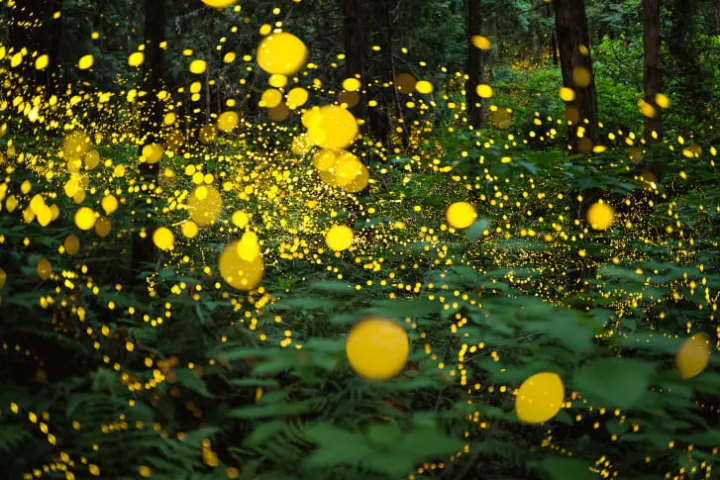
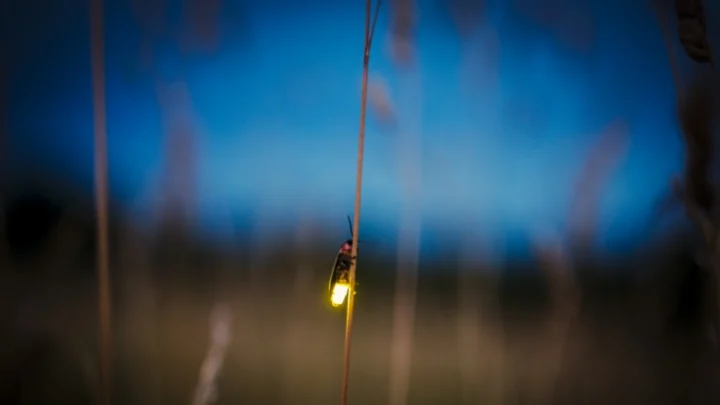
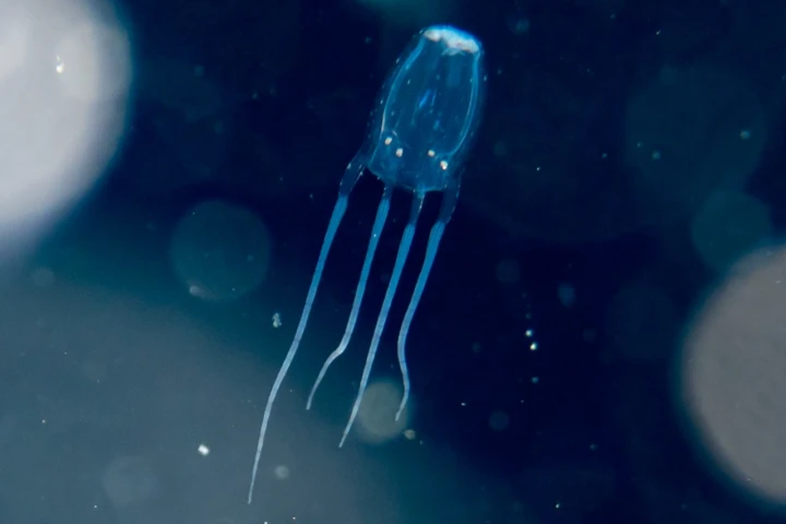 The Pain: The jellyfish's sting causes a unique set of ultra-painful symptoms dubbed "Irukandji syndrome." At first, the sting doesn't hurt much. You may experience some swelling along the site of contact and some minor discomfort. Five to 120 minutes later, though, the real pain sets in. Victims will start to experience a severe backache, headache, or shooting pains in their muscles, chest, and abdomen. Additional symptoms may include nausea, restlessness, and vomiting. If left untreated, the venom can lead to pulmonary edema (a build-up of fluid in the lungs), cardiac arrest, and death. Certain species of box jellyfish can swim almost as fast as an Olympic swimmer, giving them the ability to navigate through the water at speeds of up to 4.5 knots (about 5.2 mph).
The Pain: The jellyfish's sting causes a unique set of ultra-painful symptoms dubbed "Irukandji syndrome." At first, the sting doesn't hurt much. You may experience some swelling along the site of contact and some minor discomfort. Five to 120 minutes later, though, the real pain sets in. Victims will start to experience a severe backache, headache, or shooting pains in their muscles, chest, and abdomen. Additional symptoms may include nausea, restlessness, and vomiting. If left untreated, the venom can lead to pulmonary edema (a build-up of fluid in the lungs), cardiac arrest, and death. Certain species of box jellyfish can swim almost as fast as an Olympic swimmer, giving them the ability to navigate through the water at speeds of up to 4.5 knots (about 5.2 mph). The Asian giant hornet—a.k.a. murder hornet—is 2 inches long with a wingspan of around 3 inches and an oversized mandible with a strong black tooth. These giants of their genus have the ability to dispel venom with an enzyme so strong that it’s said to be able to dissolve human tissue. The Asian giant hornet kills more people each year than any other animal in Japan, where it's most common. The hornet’s preferred victims are honeybees. Each hornet has the ability to take out around 40 European honeybees in a mere 60 seconds. While they don’t tend to go after humans, an Asian giant hornet will sting you if you aggravate it, and running away from them won't help: these creatures can fly at speeds of 25 mph.
The Asian giant hornet—a.k.a. murder hornet—is 2 inches long with a wingspan of around 3 inches and an oversized mandible with a strong black tooth. These giants of their genus have the ability to dispel venom with an enzyme so strong that it’s said to be able to dissolve human tissue. The Asian giant hornet kills more people each year than any other animal in Japan, where it's most common. The hornet’s preferred victims are honeybees. Each hornet has the ability to take out around 40 European honeybees in a mere 60 seconds. While they don’t tend to go after humans, an Asian giant hornet will sting you if you aggravate it, and running away from them won't help: these creatures can fly at speeds of 25 mph.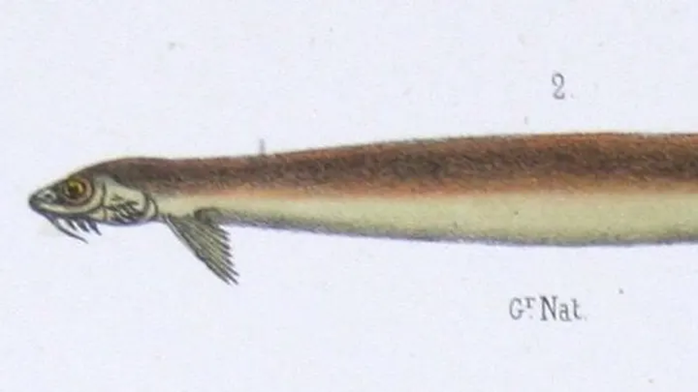 Candirú are toothpick-sized catfish native to slow-moving waterways in the upper Amazon and Orinoco river basins of South America. These inch-long parasites feed mainly on blood, can often be found inside the gills of other fish, and have been known to swim up human urethras. In 1877, a Dr. Castro performed one of the first known extractions of a candirú, "which had penetrated the woman's urethra during urination while bathing in the river. The patient experienced cruel suffering for, since I had to drag the animal out, the extraction was difficult and the mucus membrane was lacerated.”
Candirú are toothpick-sized catfish native to slow-moving waterways in the upper Amazon and Orinoco river basins of South America. These inch-long parasites feed mainly on blood, can often be found inside the gills of other fish, and have been known to swim up human urethras. In 1877, a Dr. Castro performed one of the first known extractions of a candirú, "which had penetrated the woman's urethra during urination while bathing in the river. The patient experienced cruel suffering for, since I had to drag the animal out, the extraction was difficult and the mucus membrane was lacerated.”
